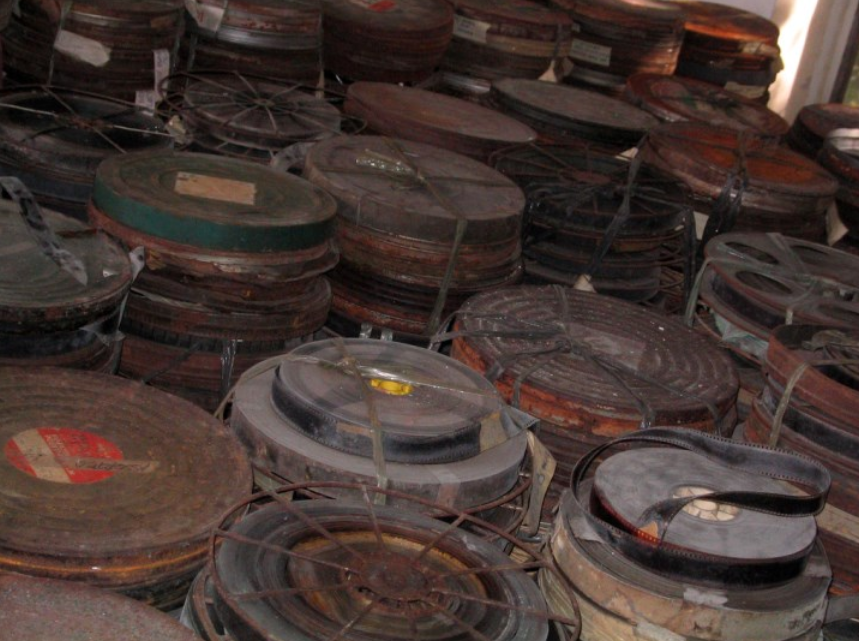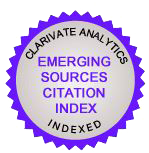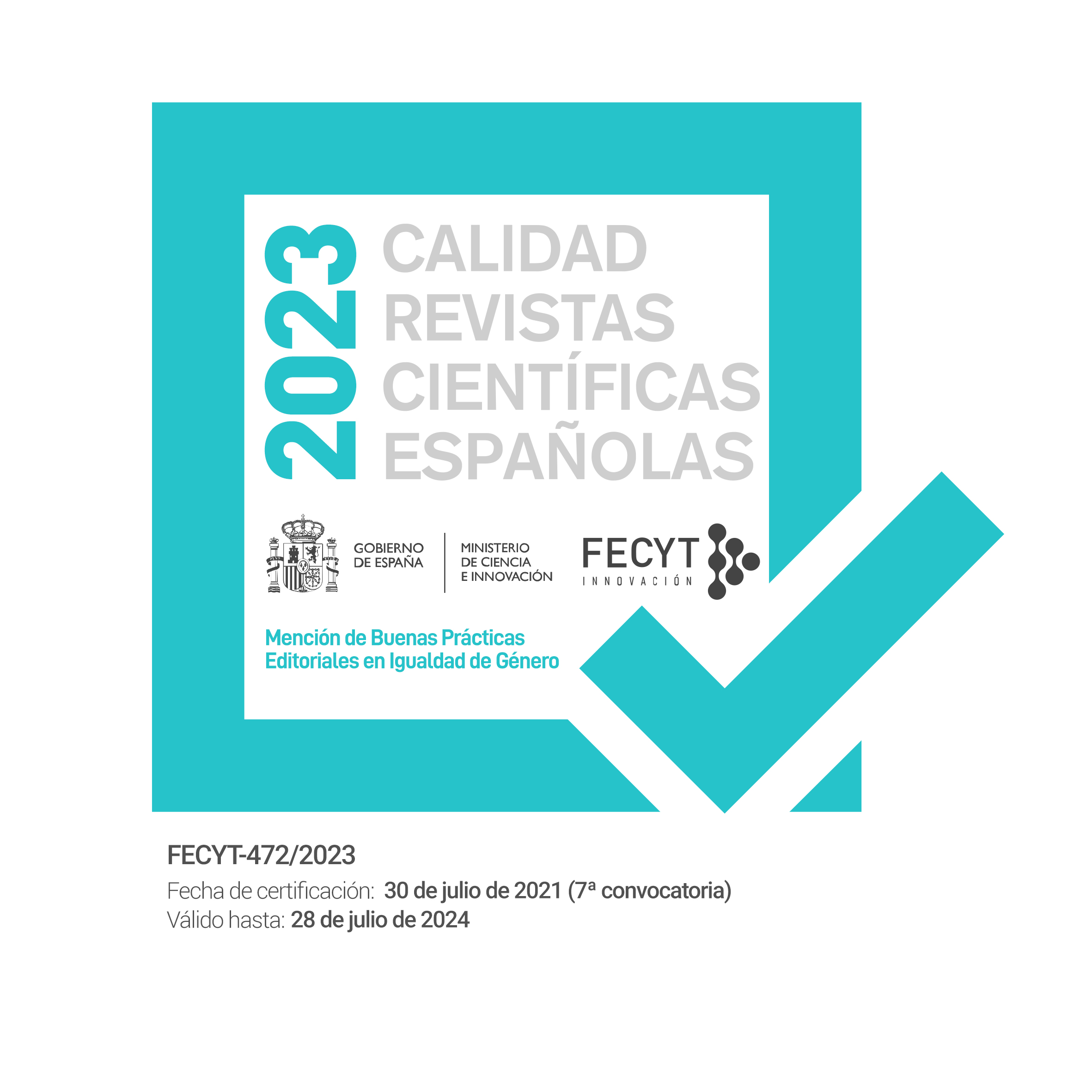¿Dónde están los documentos sonoros de un país? Una encuesta dirigida a instituciones españolas de patrimonio cultural
DOI:
https://doi.org/10.30827/erph.vi28.18485Palabras clave:
Salvaguardia de patrimonio cultural, Patrimonio sonoro, Colecciones de fonogramas, Censos de archivos, Taxonomía de archivos sonorosResumen
En sus comienzos, el concepto occidental de patrimonio cultural se centró en los edificios y el entorno. Sólo más tarde les sería concedido a los bienes documentales el derecho a ser considerados parte esencial de ese patrimonio. Era todo un hito en el camino que llevaría a que, a finales del siglo XX, también lo intangible quedara abarcado bajo el mismo concepto. De manera consecuente con ese reconocimiento, la UNESCO creó un "registro" de los documentos más relevantes de la humanidad. En él figuran ya colecciones de grabaciones sonoras, un recordatorio de que los países necesitan salvaguardar ese tipo de patrimonio. Para ello, primero deben averiguar dónde se encuentran las colecciones sonoras, tarea que implica censos detallados y exhaustivos, que en España apenas han sido emprendidos. Para ayudar a remediar esa situación, hemos llevado a cabo un proyecto de cuantificar los archivos sonoros de carácter patrimonial existentes en las distintas Comunidades Autónomas españolas. Se trataba de averiguar no solamente cuántos de ellos eran ya conocidos por las principales instituciones de cada zona geográfica, sino también cuántos más era probable que existieran. Fueron tomados como referencia y analizados varios proyectos dirigidos a censar colecciones documentales; en base a ellos, se creó una taxonomía de clases y subclases de archivos sonoros; y, tomando esa taxonomía como herramienta de trabajo, fue realizada una encuesta sobre la presencia de cada tipo de archivo sonoro en las diversas áreas geográficas del país. Los encuestados fueron una selección de instituciones documentales, cuyas observaciones han puesto de manifiesto, para un buen número de Comunidades Autónomas, una distribución significativa de archivos sonoros conforme a las categorías propuestas en la taxonomía. Además, el pequeño porcentaje que representan los archivos sonoros confirmados como tales, sobre el total referido por las instituciones, indica que la mayoría de ellos son, en la práctica, desconocidos. El estudio se propone como una referencia para investigaciones futuras que tengan como objetivo localizar archivos y colecciones sonoras, sea en el ámbito español o en otros países.
Descargas
Citas
BAGÜÉS, J. LANDABEREA, J. (2013). “Preliminares para un mapa de archivos sonoros en la Comunidad Autónoma Vasca, Navarra y País Vasco-Francés”, en XII Jornadas sobre Música Popular, 12 al 17 de noviembre de 2013. Oyarzun, Guipuzkoa: Soinuenea-Herri Musikaren Txokoa. Documento facilitado por sus autores.
CALLU, A. & LEMOINE, H. (2005). Le Patrimoine sonore et audiovisuel français : entre archives et témoignage, guide de recherches en sciences sociales. Le Roy Ladurie, E. y J. Cluzel (prefacios), J. Rigaud (postfacio), 7 vol. Paris: Belin.
CONSEJO DE EUROPA (2005). Convenio Marco del Consejo de Europa sobre el valor del patrimonio cultural para la sociedad. Faro: Consejo de Europa. En línea: <https://rm.coe.int/CoERMPublicCommonSearchServices/DisplayDCTMContent?documentId=09000016806a18d3>. [Consulta: 22.05.2020].
CONSEJO EUROPEO (2007). Resolución del Consejo de 16 de noviembre de 2007 relativa a una Agenda Europea para la Cultura (2007/C 287/01). Diario Oficial de la Unión Europea. S.l.: s.n. En línea: <http://eur-lex.europa.eu/legal-content/ES/TXT/?uri=CELEX:32007G1129(01)>. [Consulta: 22.05.2020].
EDMONDSON, R. (2002). Memoria del Mundo: Directrices para la salvaguardia del patrimonio documental. S.l.: UNESCO. En línea: <http://unesdoc.unesco.org/images/0012/001256/125637s.pdf>. [Consulta: 22.05.2020].
EDMONDSON, R. (2004). Filosofía y principios de los archivos audiovisuales. París: UNESCO. En línea: <https://www.academia.edu/1223339/Filosof%C3%ADa_y_principios_de_los_archivos_audiovisuales>. [Consulta: 22.05.2020].
FERNÁNDEZ SALINAS, V. (2008). “La protección del Patrimonio Mundial en España”, erph, Revista Electrónica de Patrimonio Histórico, n.2, pp. 36-65. En línea: <https://revistadepatrimonio.es/index.php/erph/article/view/35/19>. [Consulta: 22.05.2020].
GEMBERO USTÁRROZ, M. (2005). “El patrimonio musical español y su gestión”. Revista de Musicología, 28/1 (2005), pp. 135-181. En línea: <https://www.jstor.org/stable/20798066>. [Consulta: 23.04.2021].
GITELMAN, L. (s.f). How Users Define New Media: A History of the Amusement Phonograph. MIT Communications Forum. Boston: Massachusetts Institute of Technology. En línea: <https://web.mit.edu/comm-forum/legacy/papers/gitelman.html>. [Consulta: 22.05.2020].
GOBIERNO DE ESPAÑA (1985). Ley 16/1985, de 25 de junio, del Patrimonio Histórico Español. Boletín Oficial del Estado, vol. 29, pp. 20342–20352. En línea: <http://boe.es/buscar/act.php?id=BOE-A-1985-12534>. [Consulta: 22.05.2020].
MAUREL, C. (2017). Les effets pervers du classement au patrimoine mondial de l’Unesco. En línea: <https://theconversation.com/les-effets-pervers-du-classement-au-patrimoine-mondial-de-lunesco-70727>. [Consulta: 22.05.2020].
MIRÓ-CHARBONNIER, I. (2019). Propuestas de gestión del patrimonio sonoro español en soporte no digital: localización, preservación, análisis, acceso y difusión. [Tesis]. Madrid: Universidad Complutense. En línea: <https://eprints.ucm.es/id/eprint/56842/1/T41385.pdf>. [Consulta: 22.05.2020].
MIRÓ-CHARBONNIER, I. (2020). “Antes y después de digitalizar: una visión crítica de la gestión de colecciones sonoras en España.” Cuadernos de Documentación Multimedia 31 (Julio). Madrid: Universidad Complutense. doi: 10.5209/cdmu.70756. En línea: <https://revistas.ucm.es/index.php/CDMU/article/view/70756>. [Consulta: 11.05.2021].
OLIVERA ZALDUA, M. SÁNCHEZ VIGIL, J.M, & MARCOS RECIO, J.C. (2013). “Gestión de colecciones fotográficas: Proyecto Infoco para la creación de un censo-guía de fondos y colecciones fotográficas en España, Portugal e Iberoamérica”. Ibersid, 7 (2013) 117-122. ISSN 1888-0967. En línea: <http://www.mecd.gob.es/planes-nacionales/dam/jcr:af9af371-0f74-4c2d-92e4-1f734e2fe048/4094-5072-1-pb.pdf>. [Consulta: 22.05.2020].
PÉREZ SÁNCHEZ, A. (2015). “La grabación sonora como objeto de estudio”. En: Pedro del Villar (coord.), Teorías en las artes. Guanajuato: Universidad de Guanajuato, 2015. 67-84. En línea: < https://www.researchgate.net/publication/299509614_La_grabacion_sonora_como_objeto_de_estudio>. [Consulta: 11.05.2021].
RAMOS-SIMÓN, F. & MIRÓ-CHARBONNIER I. (2021). “Problemas en la difusión de fonogramas desde instituciones de patrimonio y soluciones mediante procesos de gestión”. Investigación Bibliotecológica: archivonomía, bibliotecología e información 35 (86): 45-71. En línea: <http://dx.doi.org/10.22201/iibi.24488321xe.2021.86.58254>. [Consulta: 11.05.2021].
Reunión Especializada de Autoridades Cinematográficas y Audiovisuales del MERCOSUR (2013). Plan Estratégico Patrimonial. Buenos Aires: RECAM. En línea: <http://www.recam.org/pma/files/other/164/Plan20Estrategico20Patrimonial.pdf>. [Consulta: 22.05.2020].
SALVADOR BENÍTEZ, A., MARTÍNEZ COMECHE, J.A. & ALICIA ARIAS COELLO (2014). “Proyecto INFOCO: Bases para la creación de un censo—guía de fondos y colecciones fotográficos en España y México”. En: M.T. Fernández Bajón y Universidad Complutense de Madrid (eds.), Nuevos hábitos de consumo de información y lectura para la inclusión social. Madrid: Universidad Complutense, Facultad de Ciencias de la Documentación.
United Nations Educational, Scientific and Cultural Organization (1972). Recomendación sobre la Protección en el Ámbito Nacional del Patrimonio Cultural y Natural. París: UNESCO. En línea: <http://unesdoc.unesco.org/images/0011/001140/114044s.pdf#page=150>. [Consulta: 22.05.2020].
United Nations Educational, Scientific and Cultural Organization (1989). Recomendación sobre la salvaguardia de la cultura tradicional y popular. París: UNESCO. En línea: <https://wayback.archive-it.org/10611/20160107214448/http://portal.unesco.org/culture/es/files/12779/10819533091recomfolklorees.pdf/recomfolklorees.pdf>. [Consulta: 22.05.2020].
United Nations Educational, Scientific and Cultural Organization (2003). Convención para la salvaguardia del patrimonio cultural inmaterial. París: UNESCO. En línea: <https://unesdoc.unesco.org/ark:/48223/pf0000153347?posInSet=5&queryId=3a0eb3cf-f62f-4414-a0ab-c4f3ce669eb1>. [Consulta: 22.05.2020].
United Nations Educational, Scientific and Cultural Organization (2006). Informe del Director General sobre las consecuencias de la proclamación de un Día Mundial del Patrimonio Audiovisual [en línea]. Paris: UNESCO. Disponible en: <http://unesdoc.unesco.org/images/0014/001469/146936s.pdf>. [Consulta: 11.05.2021].
United Nations Educational, Scientific and Cultural Organization (2015). Recomendación relativa a la protección y promoción de los museos y colecciones, su diversidad y su función en la sociedad. S.l.: UNESCO. En línea: <http://portal.unesco.org/es/ev.php-URL_ID=49357&URL_DO=DO_PRINTPAGE&URL_SECTION=201.html>. [Consulta: 22.05.2020].

Descargas
Publicado
Cómo citar
Número
Sección
Licencia
Las/os autoras/es conservan los derechos de autoría y otorgan a la revista el derecho de primera publicación (reproducción, edición, distribución, comunicación pública y exhibición).
Más infomación en Sobre la revista > Aviso de derechos de autor/a














